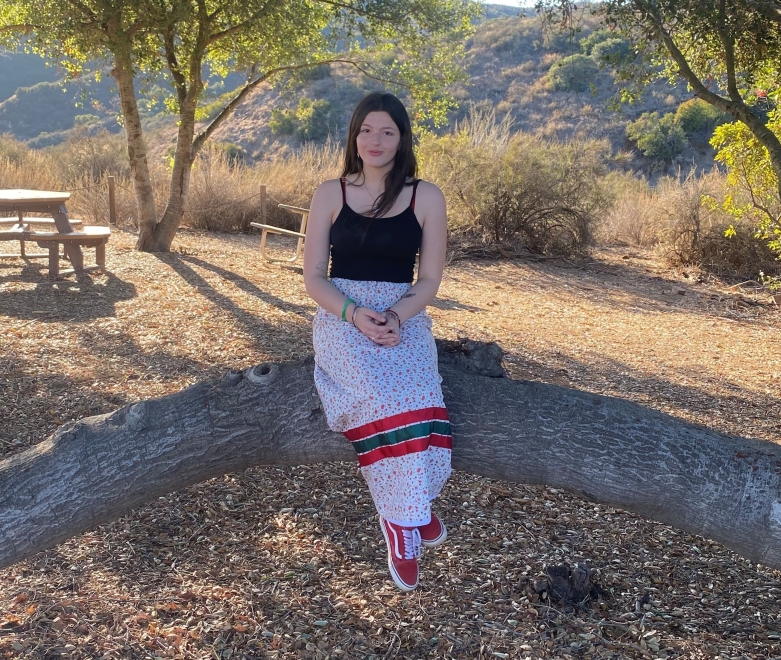Stopping the Flood Waters: Native Student Stories of Survivance & Resistance
Page Media

A report by the ACLU Foundations of Northern California, Southern California, San Diego and Imperial Counties, and the Northern California Indian Development Council, reveals significant educational inequities facing Native American students across California. "Stopping the Flood Waters: A Call to Transform California's Schools in Support of Native American Students" documents how California schools consistently fail to provide Native American students with an equitable and inclusive education.
Below, two students share their educational experiences in their own words.
Jasmine Griffith (Navajo, Ottawa, Potawatomi, Ojibwe Nation)
Like many Native students, my high school experience was one that I don’t look back on fondly. A memory from my sophomore year (2022) at Arcata High School stands out. During a history class, my teacher claimed that the only genocide in United States’ history was against enslaved Black people. This statement deeply hurt and offended me because of my own background and what I know to be true: The United States deliberately committed genocide against Native Americans in the process of founding this country.
I raised my hand and told my class about the genocide inflicted upon Native Americans. Rather than thank me for sharing, my teacher kicked me out of class and told me I was not welcome back for the rest of the year. Word of what happened spread, and the NECEP (Native Educational Choices & Empowerment Project) career coach learned about the incident. Despite the risk to her own position, she stood up for me. While she was unable to get me back into the classroom, she made sure that I could still complete assignments outside of class. However, the history teacher gave me a failing grade for every assignment I submitted.
The Indian Education coordinator continued her fierce advocacy for me, but the school took no action. I had to make up my final grade during summer school, missing out on a summer break while my peers and friends enjoyed theirs. I hope no student ever has to experience what I endured.
This experience taught me how crucial it is to have staff who will advocate for Native students, support Indian Education programs, and ensure school curricula are historically accurate and inclusive.
Jasmine Griffith is Navajo, Ottawa, Potawatomi, and Ojibwe Nation. She is very proud of her heritage. Jasmine is currently 19 years old, and she went to both Arcata High School and Pacific Coast High School. Since graduating from Pacific Coast High School, Jasmine has worked at the Northern California Development Council (NCIDC). Outside of her work at NCIDC, Jasmine has a passion for photography and Native jewelry making.
Yahmonee Hedrick (Maidu, Chickasaw, Taos Pueblo, Ute)
When I was in fourth grade in the Sacramento City Unified School District, I was assigned a history project on Mission San Gabriel. This project, which required building a model of the mission, became a powerful experience when I traveled to the mission and was guided by Kimberly Morales Johnson, a member of the Tongva Gabrielino tribe. During the tour, I asked pointed questions about the treatment of Native peoples during the mission period and learned about the brutal realities of enslavement, torture, and death that they endured.
When I returned home, rather than build a model, I chose to write a powerful essay detailing my new understanding of the missions. In my essay, I expressed that no Native person should ever have to build a mission again, a sentiment that led me to reject the traditional project. My parents supported my decision, allowing me to focus on my writing instead of constructing a model. When my teacher questioned the absence of a model, my essay became a bold statement against the historical injustices tied to the missions.
In the years since, I have reflected on my experience as a fourth grader, recognizing both the trauma I endured and the hope my story brings to future generations. I have shared my story at various conferences, youth gatherings, and education programs, hearing from others who also experienced the emotional toll of the California mission project. I found that many students silently endured the assignment, and many parents wished they had taken a stand.
I am encouraged by the progress made in California, including the passage of AB 1821 (Ramos) and districts that have abolished the mission project. I remain committed to the ongoing fight for a reinterpreted, culturally sensitive education for Native students. My experience serves as a reminder of the importance of challenging harmful curricula and amplifying the voices of marginalized communities in education.
Yahmonee Hedrick is 24 years old and is from the Maidu, Chickasaw, Taos Pueblo, and Ute Tribes. Yahmonee is currently the program coordinator for the 5th Direction, a nonprofit organization focused on uplifting and providing space for local Native youth run by his father, Calvin Hedrick.
